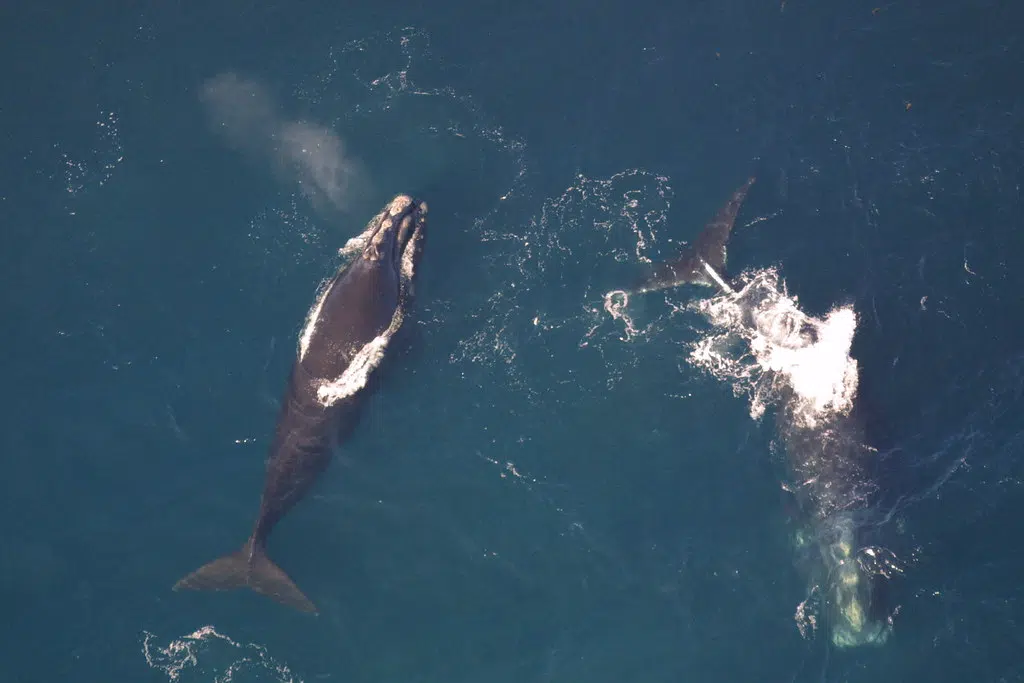It has been a good year for the endangered North Atlantic right whale in Canadian waters.
Federal officials say no deaths or new entanglements have been reported to date.
The government credits “significant” action taken to help protect the whale.
A new season-long fishing area closure protocol was introduced in the Gulf of St. Lawrence based on where whales were detected.
Fisheries and Oceans Canada also expanded the scope of where temporary and season-long closures were applied.
“As a result of these enhanced measures, 35,000 square kilometres was closed to fishing for the season. An additional 6,935 square kilometres was closed temporarily during the season,” said the government in a release.
“These closures have direct economic and operational impacts on harvesters, and the Government of Canada appreciates their continued cooperation and collaboration in helping protect these endangered whales.”
Meanwhile, Transport Canada introduced three new measures in addition to its 10-knot speed restriction throughout much of the Gulf of St. Lawrence for vessels over 13 metres.
They included two speed-restricted seasonal management areas, a restricted area in and near the Shediac Valley, and a voluntary slowdown of 10 knots in Cabot Strait.
Transport Canada issued four penalties for non-compliance with the mandatory speed restriction this year. The mandatory and voluntary speed restrictions were lifted for the season Nov. 15.
Fisheries and Oceans Canada and Transport Canada aircraft logged more than 2,500 flight hours to monitor whales. The aerial surveillance was complemented by six Viking buoys, three underwater gliders, and a drone.
“The 2020 adapted measures have helped keep North Atlantic right whales protected in Canadian waters,” said Fisheries Minister Bernadette Jordan in the release. “Our progress has been possible due to the hard work and cooperation of fish harvesters who have worked closely with us to develop and implement these measures.”
It is estimated there are 366 North Atlantic right whales remaining in the world, according to the National Oceanic and Atmospheric Administration.








